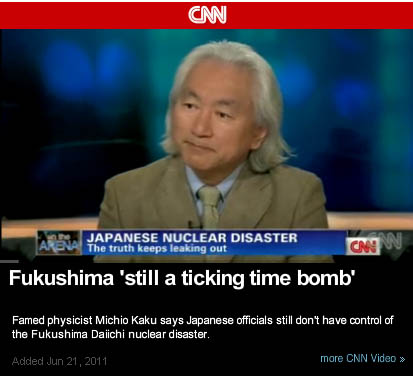Author Archive
Fukushima Nuclear Plant Remains ‘Ticking Time Bomb’ After Japan Disaster: Michio Kaku, Theoretical Physicist
6/22/11
Huffington Post
Though global fears about radiation emissions from the heavily damaged Fukushima Daiichi nuclear power facility have calmed in the weeks since Japan’s devastating March 11 earthquake and tsunami, famed physicist Michio Kaku insists the situation remains a "ticking time bomb."
A professor of theoretical physics at the City University of New York and the City College of New York, Kaku discussed some recent revelations about the disaster’s impact, and noted that Japanese officials still don’t have control at the site. "In the last two weeks, everything we knew about that accident has been turned upside down," Kaku says. "Now we know it was 100 percent core melt in all three reactors…now we know it was comparable to the radiation at Chernobyl."
Among Kaku’s other distressing notes: Fukushima workers are exposed to a year’s dose of radiation within minutes of entering the site, and cleanup will take between 50 to 100 years. "It’s like hanging by your fingernails," he says. "It’s stable, but you’re hanging by your fingernails."
Watch Kaku’s interview with CNN here:
This document contains copyrighted material whose use has not been specifically authorized by the copyright owner. SEED Coalition is making this article available in our efforts to advance understanding of ecological sustainability, human rights, economic democracy and social justice issues. We believe that this constitutes a "fair use" of the copyrighted material as provided for in section 107 of the US Copyright Law. If you wish to use this copyrighted material for purposes of your own that go beyond "fair use", you must obtain permission from the copyright owner.
Report: U.S. nuclear renaissance unlikely after Fukushima
December 28, 2011
Money & Company
Los Angeles Times
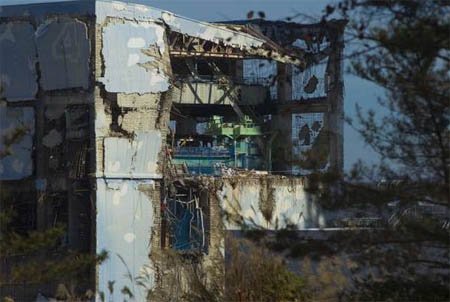
A new study released Wednesday said that the regulatory fallout from the Fukushima power plant disaster in Japan in March will short-circuit the U.S. nuclear renaissance of new power plant construction.
The report, "Nuclear Safety and Nuclear Economics," was written and presented by Mark Cooper, a frequent critic of the nuclear power industry. The report can be found here. Cooper is a senior fellow for economic analysis at the Institute for Energy and the Environment at the Vermont Law School.
Cooper said that past nuclear disasters, such as the one at the Three Mile Island power plant in Pennsylvania in 1979, have tended to greatly raise regulatory barriers and have also severely multiplied the cost of reactor construction. After Three Mile Island, for example, the report said, the cost of nuclear power plant construction doubled in most cases and trebled or quadrupled in some rare instances.
"This is an important moment to compare what is really likely to happen over the next 10 years with the industry’s expectations" of a nuclear renaissance, said Peter Bradford, an adjunct professor specializing in nuclear power and public policy at the Vermont Law School and a former Nuclear Regulatory Commission member.
"When that comparison is performed properly, it becomes clear that we are witnessing not a revival but a collapse in expectations for new reactor construction," Bradford added.
The report comes just days after a panel appointed by the Japanese government released a scathing assessment of the reponse to the disaster, which was caused when a huge earthquake generated a tsunami that struck the facility.
The investigative panel blamed the central government and the Tokyo Electric Power Co., saying both seemed incapable of making decisions to stem radiation leaks as the situation at the coastal plant worsened in the days and weeks after the disaster.
A recently updated online report by the World Nuclear Assn. said that as few as four of the 26 new nuclear facilities that have been proposed or planned in the U.S. will be finished by 2020. But it did not mention Fukushima and instead said the primary reason was the fact that a boom in domestic natural gas production has "put the economic viability of some of these projects in doubt."
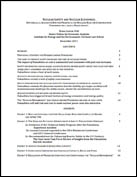 |
NUCLEAR SAFETY AND NUCLEAR ECONOMICS: HISTORICALLY, ACCIDENTS DIM THE PROSPECTS FOR NUCLEAR REACTOR CONSTRUCTION; FUKUSHIMA WILL HAVE A MAJOR IMPACT MARK COOPER, PHD Senior Fellow for Economic Analysis Institute for Energy and the Environment, Vermont Law School December 2011 Download report |
This document contains copyrighted material whose use has not been specifically authorized by the copyright owner. SEED Coalition is making this article available in our efforts to advance understanding of ecological sustainability, human rights, economic democracy and social justice issues. We believe that this constitutes a "fair use" of the copyrighted material as provided for in section 107 of the US Copyright Law. If you wish to use this copyrighted material for purposes of your own that go beyond "fair use", you must obtain permission from the copyright owner.
Perry Donor’s Radioactive Waste Site Deal Scrutinized
September 15, 2011
by PETER OVERBY
All Things Considered
NPR
| Listen to the Story | |
| All Things Considered [4 min 58 sec] | |
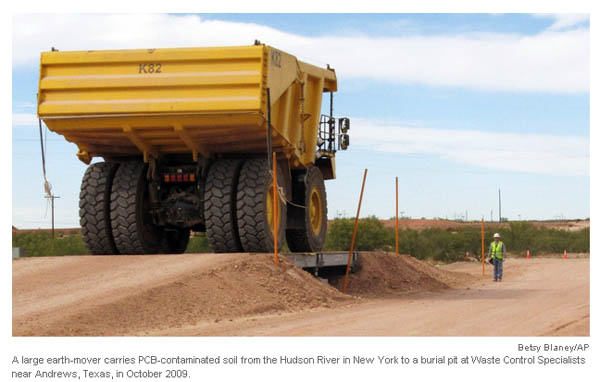
Presidential candidate Rick Perry’s ties to campaign donors came under more scrutiny this week when he was challenged during Monday’s Tea Party debate.
Perry defended taking a contribution from a drug company and then mandating use of the company’s new vaccine. “I raised about $30 million, and if you’re saying I can be bought for $5,000, I’m offended,” he said.
Actually, the drug company, Merck, has given Perry $28,500 overall. But that’s still pocket change compared with what Perry’s truly big donors have given.
In his career as governor of Texas, a state where millionaires are plentiful and contribution limits are lax, Perry has raised about half his campaign cash from just 204 big donors, according to an analysis by the watchdog group Texans for Public Justice. And his administration has helped many of those donors, even when it comes to disposing of radioactive waste.

‘The Wheels Have Been Greased’
Perry donor Harold Simmons, an 80-year-old billionaire, is a political player. He gave millions of dollars to Swift Boat Veterans for Truth in 2004, financing ads that knee-capped Democratic presidential nominee John Kerry.
For Perry, Simmons has anted up roughly $3 million worth of support over the past decade — some of the money going to Perry’s campaign committee, other dollars going to the Republican Governors Association when Perry was fundraising for it.
Simmons also owns Waste Control Specialists LLC, working in the heavily regulated industry of radioactive waste disposal.
Craig McDonald, of Texans for Public Justice, says those two facts go together.
“There has been no secret that Harold Simmons’ direct self-interest lies in building, permitting and operating his hazardous waste dump and low-level nuclear waste dump in West Texas,” he says. “And the wheels have been greased at every turn.”
An Environmental Review
In 2003, the Texas Legislature took the state-run radioactive waste program and made it a private monopoly for Waste Control Specialists. Simmons later bragged about the lobbying that accomplished that.
Waste Control Specialists owned the site in West Texas. But it needed an environmental review. A panel of eight state employees fended off corporate lobbyists and the Perry administration for four years to produce their report.
“We knew from the beginning that this permit was intended to be issued,” says Glenn Lewis, who was on the panel.
And they understood why.
“The realization that Harold Simmons was a top campaign contributor to Gov. Perry,” Lewis says.
Despite that, the panel said that radioactive waste should not be buried so close to big aquifers.
“I am frankly surprised even now that a team of engineers and geologists, knowing what the political expectations were, still worked up the nerve to say, ‘No, it’s not safe,’ ” Lewis says.
Getting A License
Next, Waste Control Specialists needed license approval from the Texas Commission on Environmental Quality. All three commissioners were Perry appointees. The commission chose to ignore the environmental review.
One of the commissioners, Larry Soward, says complaints were pouring in. He thought a public hearing was called for. The other two commissioners said no.
“They voted to issue the license without sending it to a hearing, and I voted against that,” Soward says.
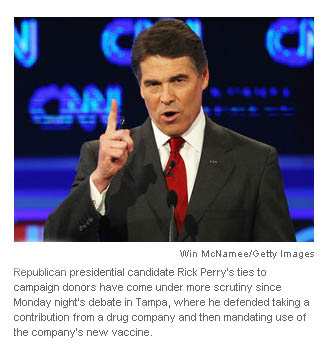
In the end, the commission gave the go-ahead to Waste Control Specialists. The commission’s top staffer joined the company as a lobbyist. Lewis quit his job. Soward didn’t seek another term on the commission.
Soward says he’s still bothered by the lack of any public hearing.
“I think that generations to come are going to have a real problem from that site that they’re going to have to deal with,” he says.
A Nationwide Scale
Up to this point, Waste Control Specialists had been developing a small facility — one where Texas, one other state and the federal government could bury low-level radioactive waste.
But a corporate report lays out a vision unique in this country: “one-stop shopping” for the entire nation’s hazardous, toxic and radioactive waste. It would cover more than 20 square miles.
At an oversight hearing last year, CEO Bill Lindquist said the business plan needs that nationwide scale.
“It’s the Cadillac of facilities,” Lindquist said, “which is wonderful for the state of Texas, but it’s very expensive, and the cost to construct it and operate it and license it is a lot more than what was contemplated in 2003.”
In January, the Texas Legislature said Waste Control Specialists can import radioactive waste from 34 additional states.
Perry’s spokesman didn’t respond to requests for comment.
Chuck McDonald, a spokesman for Waste Control Specialists, says the environmental concerns are exaggerated.
“That is the most geologically tested plot of land on planet Earth,” he says.
Equally exaggerated, McDonald says, are the suggestions that Simmons’ campaign money bought Perry’s support.
“The criticism of the governor — it’s all unfounded. The notion that we’ve somehow benefited is laughable,” he says.
Simmons is now fostering Perry’s White House ambitions. This summer he gave $100,000 to a group that rallied Perry supporters for Iowa’s straw poll. (Perry did not compete in the poll; he ended up announcing his candidacy the same day in South Carolina.)
Back in 2006, Simmons told the Dallas Business Journal that one of the most influential things for business success is “the policy of the federal government.”
This document contains copyrighted material whose use has not been specifically authorized by the copyright owner. SEED Coalition is making this article available in our efforts to advance understanding of ecological sustainability, human rights, economic democracy and social justice issues. We believe that this constitutes a “fair use” of the copyrighted material as provided for in section 107 of the US Copyright Law. If you wish to use this copyrighted material for purposes of your own that go beyond “fair use”, you must obtain permission from the copyright owner.
Fixing America’s Nuclear Waste Storage Problem
June 20, 2011
Robert Alvarez
The Nation Magazine
In March 1992 George Galatis, a nuclear engineer at the Millstone nuclear power station in Waterford, Connecticut, became alarmed during a refueling. The reactor had to be shut down and the full radioactive core of the Unit 1 reactor, which held thousands of rods, was removed and then dumped into the spent fuel pool—a blatant violation of Nuclear Regulatory Commission (NRC) safety requirements.
The pool was already quite full. It wasn’t designed to suddenly hold those very radioactive and thermally hot fuel rods, which give off so much radiation that an unshielded person nearby would receive a lethal dose in seconds. In a previous incident around that time, a worker’s boots melted during this procedure. Because the pool could overheat, and possibly cause the pumps and cooling equipment to fail, the NRC had required reactor operators to wait for sixty-five hours before performing this task—with good reason. NRC studies over the past thirty years have consistently shown that even partial drainage of a spent fuel pool that exposed highly radioactive rods could release an enormous amount of radioactivity into the environment. Arnie Gundersen, a nuclear engineer with many years of experience at US nuclear reactors, describes this kind of accident as "Chernobyl on steroids."
Northeast Utility (which sold the Millstone reactors to Dominion Power in 2000) was standing to lose about $500,000 a day for replacement power if it followed the rules calling for a shutdown that would last more than two months. It had taken this shortcut for many years, while the NRC deliberately looked the other way.
By this time, the corporations that owned the nation’s nuclear reactors were stuffing about four times more spent fuel into storage pools than the pools were designed to accommodate, with the NRC’s blessing. It took several years for Galatis to force the NRC to take action at Millstone, at the expense of his career. His whistleblowing landed him on the cover of Time and embarrassed the NRC into performing a more thorough inspection of the reactor. The agency found a host of problems and ordered Unit 1 closed in 1996. The reactor was permanently shut down in 1998, but the spent fuel remains in a pool while the reactor is still being decommissioned, thirteen years later.
In the tradition of no good deed going unpunished, the Republican-controlled Congress, led by then–Senator Pete Domenici, was outraged over Millstone 1’s closure and made sure that the NRC would never do this again. In his autobiography, Domenici proudly notes that he sought to cut 700 jobs at the NRC in 1999, effectively gutting its regulatory efforts. "While many NRC requirements had questionable impact on safety," Domenici said, "their impact on the price of nuclear energy was far more obvious. This ‘tough love’ approach was necessary."
Domenici had his way. By 2000, the NRC sharply curtailed its oversight activities and became more of an enabler of nuclear power than a regulator. To this day, it remains overly dependent on nuclear industry self-reporting of problems.
Nearly twenty years after George Galatis began his lonely struggle to improve safety of spent fuel pools, the Fukushima catastrophe in Japan has once again turned a spotlight on this serious hazard in the United States. The explosions at the Fukushima Dai-Ichi station left the spent fuel pools at three reactors exposed to the open sky, as Tokyo Electric Power (Tepco), the company that owns the crippled power station, desperately try to keep them cool with thousands of tons of water. Spent fuel in one pool is believed to have caught fire and exploded. American reactors have generated about 65,000 metric tons of spent fuel, of which 75 percent is stored in pools, according to Nuclear Energy Institute data. No other nation has generated this much radioactivity from either nuclear power or nuclear weapons production.
Nearly 40 percent of the radioactivity in US spent fuel is cesium-137. The 4.5 billion curies of radioactive cesium-137 in US spent reactor fuel is roughly twenty times more than what was released by all worldwide atmospheric nuclear weapons tests. American spent fuel pools hold about fifteen to thirty times more cesium-137 than the 1986 Chernobyl accident released. For instance, the pool at the Vermont Yankee reactor, a BWR Mark I (a boiling-water reactor, the same design as the four crippled reactors in Fukushima), currently holds nearly three times the amount of spent fuel stored at Dai-Ichi’s Unit 4 reactor. The Millstone reactors, which have the largest spent-fuel inventory in the United States, hold over five times more radioactivity than the combined total in the pools at the four wrecked Dai-Ichi reactors.
Even though they contain some of the largest concentrations of radioactivity on the planet, US spent nuclear fuel pools are mostly contained in ordinary industrial structures designed to merely protect them against the elements. Some are made from materials commonly used to house big-box stores and car dealerships.
The United States has thirty-one boiling water reactors with pools elevated several stories above ground, similar to those at Dai-Ichi. As in Japan, all spent fuel pools at nuclear power plants do not have steel-lined, concrete barriers that cover reactor vessels to prevent the escape of radioactivity. They are not required to have back-up generators to keep used fuel rods cool if offsite power is lost.
For nearly thirty years, NRC waste-storage requirements have remained contingent on the opening of a permanent waste repository that has yet to materialize. Now that the Obama administration has canceled plans to build a permanent deep-disposal site at Yucca Mountain in Nevada, spent fuel at the nation’s 104 reactors will continue to accumulate and is likely remain onsite for decades to come.
Domenici and the nuclear industry have often said that spent nuclear fuel could be stacked on a football field ten feet deep. There’s a problem with this assertion. First, it’s not remotely feasible and, most certainly, ill advised to squeeze the largest concentration of radioactivity on the planet onto a field. This would unleash chain reactions involving enough plutonium to fuel about 150,000 nuclear weapons, and could ignite a radiological fire that would cause long-term land contamination that would make Chernobyl and Fukushima look like pimples on a pumpkin. It would deliver lethal radiation doses to thousands if not millions of people hundreds of miles away. In other words, storing the entire nation’s spent fuel in one place would be a mistake.
The nuclear catastrophe at Chernobyl illustrated the damage cesium-137 can wreak. Nearly 200,000 residents from 187 settlements were permanently evacuated because of contamination by cesium-137. The total area of this radiation-control zone is huge. At more than 6,000 square miles, it is equal to about two-thirds the area of the State of New Jersey. During the following decade, the population of the region declined by almost half because of migration to areas of lower contamination.
On June 7 the Japanese government reported to the International Atomic Energy Agency that the amount of radioactivity released into the atmosphere during the first week of the accident was twice its previous estimate. The government failed to mention that an equally large amount was discharged into the sea, indicating that the Fukushima accident may have released more radioactivity into the environment than was released at Chernobyl. Around the same time, the Nuclear Waste Management Organization of Japan reported that cesium-137 contamination from the accident had rendered an area about seventeen times bigger than Manhattan uninhabitable.
I co-authored a report in 2003 that explained how a spent fuel pool fire in the United States could render an area uninhabitable that would be as much as sixty times larger than that created by the Chernobyl accident. If this were to happen at one of the Indian Point nuclear reactors—located about twenty-five miles from New York City—it could result in as many as 5,600 cancer deaths and $461 billion in damages.
The US government should promptly take steps to reduce these risks by placing all spent nuclear fuel older than five years in dry, hardened storage casks—something Germany did twenty-five years ago. It would take about ten years and cost $3.5–7 billion to accomplish. If the cost were transferred to energy consumers, the expenditure would result in a marginal increase of less than 0.4 cents per kilowatt-hour for consumers of nuclear-generated electricity. Despite the destruction wreaked by the earthquake and tsunamis in Japan, the dry casks at the Fukushima site were unscathed.
Another payment option is available for securing spent nuclear fuel. Money could be allocated from $18.1 billion in unexpended funds already collected from consumers of nuclear-generated electricity under the Nuclear Waste Policy Act to establish a disposal site for high-level radioactive wastes.
After more than fifty years, the quest for permanent nuclear waste disposal remains illusory. One thing, however, is clear, whether we like it or not: the largest concentrations of radioactivity on the planet will remain in storage at US reactor sites for the indefinite future. In protecting America from nuclear catastrophe, safely securing the spent fuel by eliminating highly radioactive, crowded pools should be a public safety priority of the highest degree.
With a price tag of as much as $7 billion, the cost of fixing America’s nuclear vulnerabilities may sound high, especially given the heated budget debate occurring in Washington. But the price of doing too little is incalculable.
This document contains copyrighted material whose use has not been specifically authorized by the copyright owner. SEED Coalition is making this article available in our efforts to advance understanding of ecological sustainability, human rights, economic democracy and social justice issues. We believe that this constitutes a "fair use" of the copyrighted material as provided for in section 107 of the US Copyright Law. If you wish to use this copyrighted material for purposes of your own that go beyond "fair use", you must obtain permission from the copyright owner.
CPS pursues shift from coal to natural gas
Friday, November 18, 2011
Utility will bid on 800-megawatt plant that could power 200,000 houses.
By David Hendricks
San Antonio News-Express
CPS Energy will know by year’s end whether it will be successful in acquiring a natural-gas plant that would largely replace two coal-fired plants set to be retired by 2018, executives said Thursday.
Once CPS gets a plant, it will seek to buy natural gas produced by the Eagle Ford shale operations in South Texas, said Doyle Beneby, the utility’s president and CEO.
The city-owned utility will place its bid in the coming weeks for an undisclosed natural-gas plant near San Antonio with a generation capacity of 800 megawatts. The buyer will be determined in December, and the sale is likely to close in the first quarter of 2012, said Cris Eugster, CPS chief sustainability officer.Eight-hundred megawatts from a natural-gas plant is enough to power about 200,000 houses, Eugster said.
Acquiring a natural-gas plant is part of the utility’s policy to reduce use of carbon-emitting fuels, Beneby told several hundred people at the Forum on Entrepreneurship breakfast held by St. Mary’s University’s Bill Greehey School of Business.
"We’ll be in the market for natural gas, and what better place than sitting on top of the Eagle Ford?" Beneby asked.
"Instead of shipping coal from Wyoming, we will be buying gas from locals," he added.
Shutting down the Deely coal units by 2018 means less particulate emissions, Beneby said.
Eugster said natural gas-fired electricity plants use one-third the water of coal-fired plants and emit about half the greenhouse gases.
The utility is in the midst of collecting bids, for the third time, on a proposed 400-megawatt solar project — enough to power 80,000 homes. Bidding began Monday and concludes Dec. 7. Previous rounds were scrapped because late bids came in, reflecting quickly falling solar equipment prices.
CPS added new minimum requirements for bids, including creating at least 800 jobs, establishing a $30 million annual payroll, and making $100 million in manufacturing capital investments. The utility staged an online conference Thursday to assist companies planning to submit bids.
Beneby said that even though CPS Energy’s possible investment in the expansion of the South Texas Project nuclear plant is on hold, he’s hoping for more nuclear power long-term.
The 1979 Three Mile Island accident set back the U.S. nuclear industry about 25 years, and Japan’s tsunami-related damage this year will set it back another three to four years, Beneby said.
If the U.S. military disarms some of its plutonium-based weapons arsenal, some of that material might be mixed with uranium to provide new domestic-source fuel for nuclear plants, he added.
This document contains copyrighted material whose use has not been specifically authorized by the copyright owner. SEED Coalition is making this article available in our efforts to advance understanding of ecological sustainability, human rights, economic democracy and social justice issues. We believe that this constitutes a "fair use" of the copyrighted material as provided for in section 107 of the US Copyright Law. If you wish to use this copyrighted material for purposes of your own that go beyond "fair use", you must obtain permission from the copyright owner.
